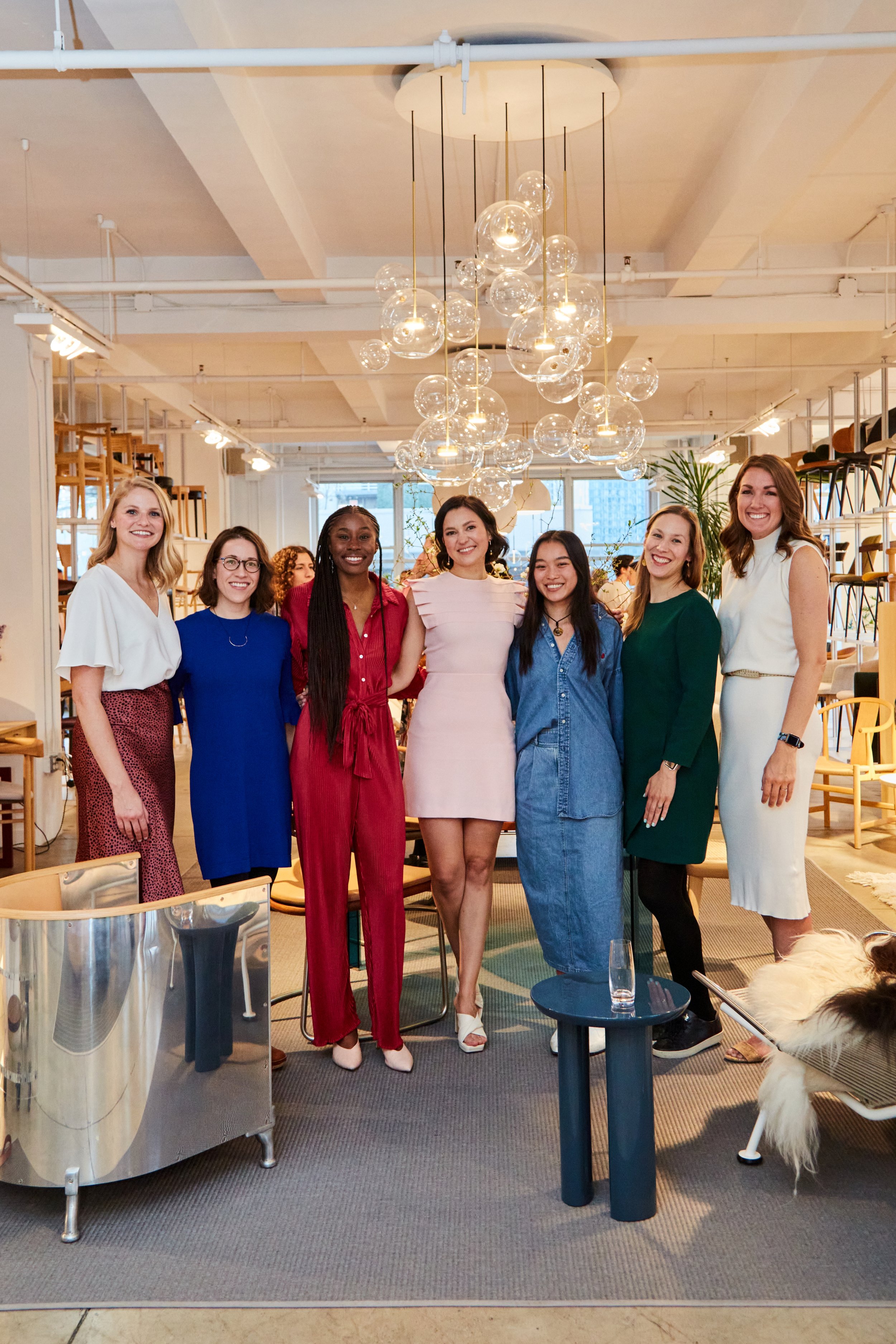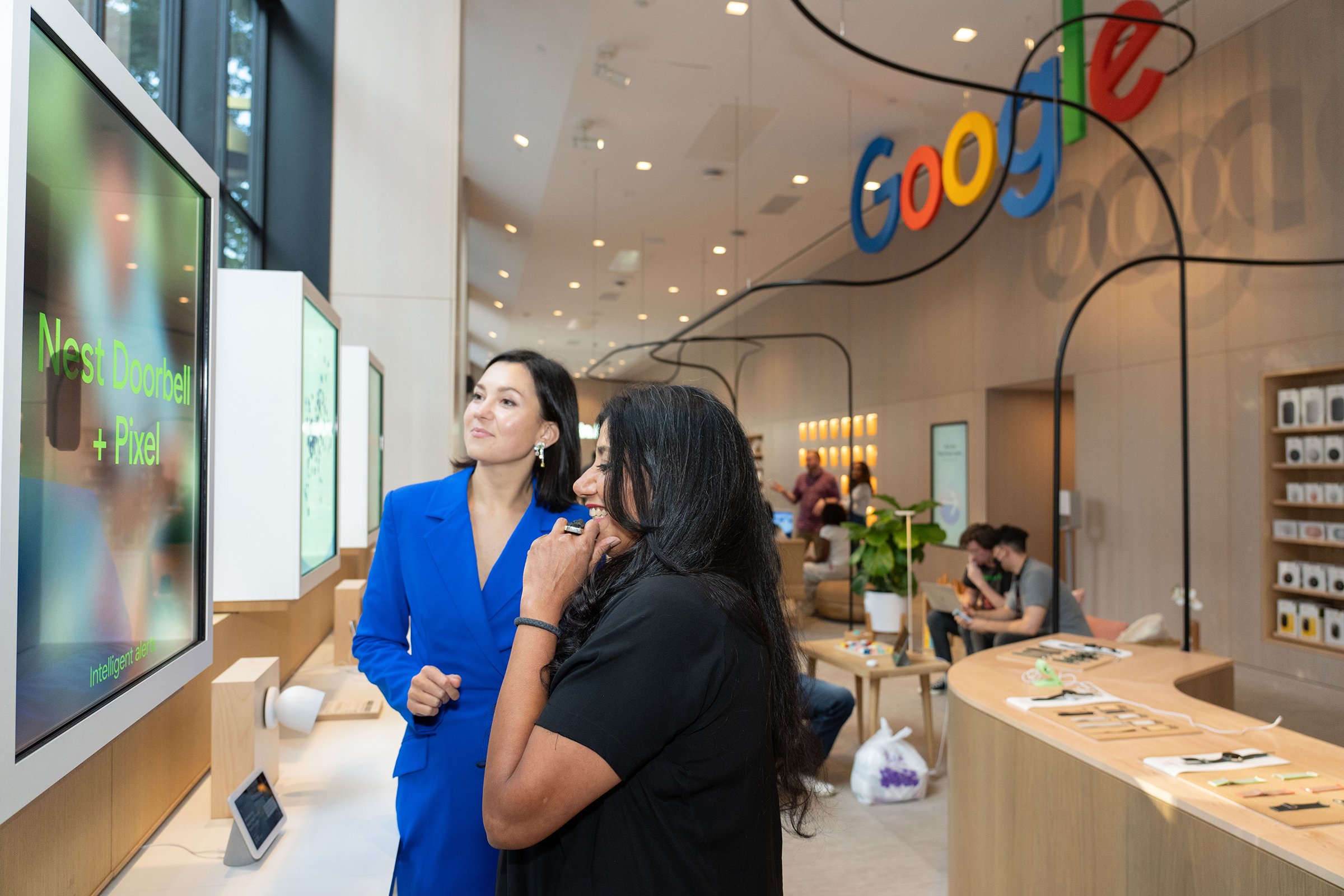Courtesy of Sylvie Rosokoff. Julia Gamolina, a New York City based architect, founder of ‘Madame Architect’ spoke to students in Mount Holyoke’s Gamble Auditorium.
By Melanie Duronio ’26
Features Editor
An innovator in the architectural world, Julia Gamolina is a New York City-based architect, writer and educator best known for her digital magazine Madame Architect, which both highlights the stories of and builds community for women architects.
Gamolina was invited to speak in Gamble Auditorium on Wednesday, Sept. 27, for the event “Towards Madame Architect: Dialogues for a Different Future,” where she talked about her startup and offered career advice to students.
The event was organized by Five College Associate Professor of Sustainable Architecture Naomi Darling, who wanted students to know of the “many different ways in which to pursue one's interests and a career in the greater architecture and design proficient profession.”
Madame Architect originally started as a guest series on Achite XX’s online journal, a nonprofit organization dedicated to promoting gender equity in the field of architecture. Gamolina wanted it “to break the architect’s mold and show young women entering the industry the myriad choices they have in crafting a dynamic, meaningful and interesting career,” according to the Madame Architect website.
Gamolina’s first interview, in 2015, was with Vivian Lee, her “official mentor.” The two met while attending ArchiteXX’s mentorship events.
“After every single conversation with [Lee] I thought, ‘I need to share this.’ I’m not the only woman, or the only person or the only young architect with the same questions and anxieties, but also hopes and dreams,” Gamolina said. “So how can I really pay forward [the knowledge] I’m getting from my mentors?”
Left photo courtesy of Belle Morizio; staff of the magazine ‘Madame Architect’ pose together and celebrate their impactful journalism.
Right photo courtesy of Robert Jones; ‘Madame Architect’ presents Julia Gamolina (left) and Suchi Reddy (right) at the Google Store.
In her writing, Gamolina tries to interview people with different focuses in the field who are at different stages in their lives. She recalls the positive notes from her mentors and peers, especially comments along the lines of “Thursdays are now my favorite day because that’s when a Madame Architect interview comes out.” It was the first sign she saw that her work was having a meaningful impact.
What Professor Emeritus of Art History Michael Davis, who attended the event, found most insightful about Gamolina’s remarks was “that they offered a glimpse of the many ways in which one can engage with architecture and design as well as the ways in which architecture can be an active force for positive change in the world.”
Writing Madame Architect also helped Gamolina connect with people in her new community, as she was new to the New York area at the time. She frequently turned to magazines to “figure out how to navigate [her] worlds.”
Doing so, she noticed that “the general interest women’s magazines very rarely featured architects … I wasn’t getting the kind of stories I was looking for in architecture [media], and I wasn’t seeing architecture in general interest magazines,” Gamolina said. “Eventually, I realized [that] this series I was doing interviews [for] was really tapping into something.”
Since then, Madame Architect has published weekly for the past five years, featuring over 400 women architects. It publishes a variety of articles and columns, including feature interviews — “the heart and soul” of the publication — as well as personal and academic essays, a historical column titled “In Ink,” and team interviews that highlight women from different architectural firms.
Other columns include “NextGen,” Gamolina’s “favorite column” focused on student architects, and “Expanding the Conversation,” which emphasizes intersectionality in architecture. Madame Architect accepts submissions from anyone interested in writing an essay for the magazine.
The articles show how women’s daily lives intersect with their art, as well as the variety of professions within architecture. From fashion to geology to journalism, Madame Architect gives a “peek inside” the industry and its existing options.
“Not every — or even many — architecture student ends up building skyscrapers and art museums, but whatever they do, they bring along a powerful combination of analytical and creative skills,” Davis said.
When COVID-19 hit in 2020, the architecture field also faced an “accelerat[ed] awareness … of issues women face” in the industry. As women's writing slowed and men’s increased, many spoke of increased pressure to take on more childcare and household duties.
Students spoke of their anxieties about entering the workforce during a time when everything shut down and turned remote. Madame Architect provided a platform for these voices and concerns through personal essays and columns such as “NextGen.”
However, the gender of the interviewees is never the main subject of the Madame Architect articles unless they “feel like gender … was an element” in their career path. Instead, subjects are asked about their backgrounds, how they came to the field and built their firms, any challenges they faced and their accomplishments and goals for the future.
“What I really wanted to do through these interviews is [present] this theme of ‘architects that are women’ from a very celebratory place,” Gamolina said. “These women have worked so hard to make the careers that they have, the firms they have [and] to become the professors that they are. And I just really want to hear about that journey.”
As a whole, the magazine provides a platform for “mentorship and inspiration,” with Gamolina referring to it specifically as a “virtual mentor.” Madame Architect provides a space for architects of all ages and backgrounds to connect. Gamolina feels “the community aspect of Madame Architect is really, really strong,” and not just that, it is “a community that wants to do things differently.”
“This idea of … this small community that is focused on highlighting their peers [and] their colleagues in the industry has been really, really incredible,” Gamolina said.
Gamolina ended her speech with three main takeaways for students: to retain a deep respect for the industry and people they work with, to “study [them]selves” by understanding how an interest can be used to “put something new out into the world” and to share work and make connections.
“Sharing your work ultimately is really important, and self-advocacy is really important so that you can collaborate and find your community and people to bring beautiful things into the world,” Gamolina said. “Make sure you’re talking about things that you care about and the work that you’re doing, and that will lead to more wonderful work and opportunities.”
Davis felt that “she reassured the audience that each person could follow their interests and strengths in their education and practice — as artists, as writers, as scientists. Students can find themselves and be themselves under the broad tent of architecture.”
“For me, teaching at Mount Holyoke College, the oldest women’s college in the U.S., and now a gender-diverse women’s college, it is especially meaningful to have Julia with us here today,” said Darling. “Thank you, Julia, for collecting so many voices and perspectives of women working on behalf of our built environment.”



